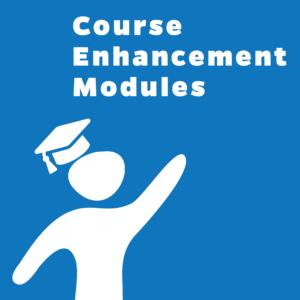References and Resources
Not only does this page contain references from this CEM, it contains relevant resources useful for further inquiry.
References
Agran, M., Alper, S., & Wehmeyer, M. (2002). Access to the general education curriculum for students with significant disabilities: What it means to teachers. Education and Training in Mental Retardation and Developmental Disabilities, 37(2), 123-133.
Browder, D., Wakeman, S., Flowers, C., Rickelmann, R. J., Pugalee, D., & Karvonen, M. (2007). Creating access to the general education curriculum with links to grade-level content for students with significant cognitive disabilities: An explication of the concept. Journal of Special Education, 41, 2-16.
Brown, L., Nietupski, J., & Hamre-Nietupski, S. (1976). Criterion of ultimate functioning. In A. Thomas (Ed.), Hey, don’t forget about me! Reston, VA: CEC Information Center.
Carter, E. W., Austin, D., & Trainor, A. A. (2012). Predictors of postchool employment outcomes for young adults with severe disabilities. Journal of Disability Policy Studies, 23(1), 50-63.
Halverson, A. T., & Neary, T. (2009). Building inclusive schools: Tools and strategies for success. Upper Saddle River, NJ: Pearson.
Newman, L., Wagner, M., Cameto, R., Knokey, A. M., & Shaver, D. (2010). Comparisons across time of the outcomes of youth with disabilities up to 4 years after high school: A report of findings from the National Longitudinal Transition Study (NLTS) and the National Longitudinal Transition Study-2 (NLTS-2). Retrieved from http://files.eric.ed.gov/fulltext/ED512149.pdf
Oberti v. Board of Education of Clementon School District, 995 F.2d 12014 (NJ 1993).
Sailor, W., & McCart, A. (2014). Stars in alignment. Research & Practice for Persons with Severe Disabilities, 39(1), 55-64. doi:10.1177/1540796914534622
Test, D. W., Mazzotti, V. L., Mustian, A. L., Fowler, C. H., Kortering, L., & Kohler, P. (2009). Evidence-based secondary transition predictors for improving postchool outcomes for students with disabilities. Career Development for Exceptional Individuals, 32(3), 160-181.
Additional Reading
Artiles, A. J., Kozleski, E. B., & Gonzalez, T. (2011). Beyond the allure of inclusive education in the United States: Facing power, pursuing a cultural-historical agenda. Retrieved from http://www.academia.edu/605863/Beyond_the_allure_of_inclusive_education_in_the_United_States_Facing_power_pursuing_a_cultural-historical_agenda
Benz, M., Lindstrom, L., & Yovanoff, P. (2000). Improving graduation and employment outcomes of students with disabilities: Predictive factors and student perspectives. Exceptional Children, 66, 509-529.
Boutot, E. A., & Bryant, D. P. (2005). Social integration of students with autism in inclusive settings. Education & Training in Developmental Disabilities, 40(1), 14-23.
Burrello, L. C., Sailor, W., & Kleinhammer-Tramill, J. (Eds.). (2013). Unifying educational systems: Leadership and policy perspectives. New York, NY: Routledge.
Campbell, J., Gilmore, L., & Cuskelly, M. (2003). Changing student teachers’ attitudes toward disability and inclusion. Journal of Intellectual and Developmental Disability, 28(4), 369-379.
Carter, E. W., Moss, C. K., Hoffman, A., Chung, Y. C., & Sisco, L. (2011). Efficacy and social validity of peer support arrangements for adolescents with disabilities. Exceptional Children, 78(1), 107-125.
Causton-Theoharis, J., Theoharis, G., Orsati, F., & Cosier, M. (2011). Does self-contained special education deliver on its promises? A critical inquiry into research and practice. Journal of Special Education Leadership, 24(2), 61-78.
Chung, Y. C., & Carter, E. W. (2013). Promoting peer interactions in inclusive classrooms for students who use speech-generating devices. Research and Practice for Persons with Severe Disabilities, 38(2), 94-109.
de Valenzuela, J. S., Copeland, S. R., Huaqing Qi, C., & Park, M. (2006). Examining educational equity: Revisiting the disproportionate representation of minority students in special education. Exceptional Children, 72(4), 425-441.
Dessemontet, R. S., Bless, G., & Morin, D. (2012). Effects of inclusion on the academic achievement and adaptive behaviour of children with intellectual disabilities. Journal of Intellectual Disability Research, 56(6), 579-587.
Donnellan, A. M. (1984). The criterion of the least dangerous assumption. Behavioral Disorders, 9(2), 141-150.
Fisher, M., & Meyer, L. H. (2002). Development and social competence after two years for students enrolled in inclusive and self-contained educational programs. Research & Practice for Persons with Severe Disabilities, 27(3), 165-174.
Fitch, F. (2003). Inclusion, exclusion, and ideology: Special education students’ changing sense of self. Urban Review, 35(3), 233-252.
Foreman, P., Arthur-Kelly, M., Pascoe, S., & King, B. (2004). Evaluating the educational experiences of students with profound and multiple disabilities in inclusive and segregated classroom settings: an Australian perspective. Research & Practice for Persons with Severe Disabilities, 29(3), 183-193.
Heller, K. A., Holtzman, W. H., & Messick, S. (Eds.). (1982). Placing children in special education: A strategy for equity. Washington, DC: National Academy Press.
Herih, T. (2011). Reflections on inclusion. In R. Elmore (Ed.), I used to think . . . And now I think: Twenty leading educators reflect on the work of school reform (pp. 59-64). Cambridge, MA: Harvard Education Press.
Hunt, P., & Goetz, L. (1997). Research on inclusive educational programs, practices, and outcomes for students with severe disabilities. The Journal of Special Education, 31(1), 3-29.
Individuals With Disabilities Education Act, 20 U.S.C. § 1400 (2004).
Jorgensen, C. M., McSheehan, M., & Sonnenmeier, R. M. (2010). The Beyond Access Model: Promoting membership, participation, and learning for students with disabilities in the general education classroom. Baltimore, MD: Paul H. Brookes.
Kurth, J. A., & Mastergeorge, A. M. (2012). Impact of setting and instructional context for adolescents with autism. Journal of Special Education, 46(1), 36-48.
Leitch, D., & Sodhi, S. S. (1986). Specialness of special education. B.C. Journal of Special Education, 10(4), 349-358.
McDonnell, J., Johnson, J. W., Polychronis, S. C., & Riesen, T. (2002). The effects of embedded instruction on students with moderate disabilities enrolled in general education classes. Education & Training in Developmental Disabilities, 37, 363-377.
McLeskey, J., Waldron, N. L., & Redd, L. (2014). A case study of a highly effective, inclusive elementary school. Journal of Special Education, 48(1), 59-70.
Obiakor, F. E., Harris, M., Mutua, K., Rotatori, A., & Algozzine, B. (2012). Making inclusion work in general education classrooms. Education and Treatment of Children, 35(3), 477-490.
Palmer, D. S., Fuller, K., Arora, T., & Nelson, M. (2001). Taking sides: Parent views on inclusion for their children with severe disabilities. Exceptional Children, 67, 467-484.
Pivik, J., McComas, J., & LaFlamme, M. (2002). Barriers and facilitators to inclusive education. Exceptional Children, 69(1), 97-107.
Ryndak, D. L., Jackson, L. B., & White, J. M. (2013). Involvement and progress in the general curriculum for students with extensive support needs: K-12 inclusive-education research and implications for the future. Inclusion, 1(1), 28-49.
Rydak, D. L., Taub, D., Jorgensen, C. M., Gonsier-Gerdin, J., Arndt, K., Sauer, J., Allcock, H. (in press). Policy and the impact on placement, involvement, and progress in general education: Critical Issues that require rectification. Research and Practice for Persons with Severe Disabilities.
Sailor, W. (2002). (Ed.). Devolution, school/community/family partnerships, and inclusive education. In Whole-school success and inclusive education: Building partnerships for learning, achievement, and accountability. Special education series (pp. 7-25). New York, NY: Teachers College Press.
Skrtic, T. M., Sailor, W., & Gee, K. (1996). Voice, collaboration, and inclusion: Democratic themes in educational and social reform initiatives. Remedial and Special Education, 17(3), 142-157.
Smith, P. (Ed.) (2010). Whatever happened to inclusion? The place of students with intellectual disabilities in education. In Disabilities studies in education (Vol. 7; pp. 1-20). New York, NY: Peter Lang.
Soukup, J. H., Wehmeyer, M. L., Bashinski, S. M., & Bovaird, J. A. (2007). Classroom variables and access to the general curriculum for students with disabilities. Exceptional Children, 74(1), 101-120.
Turnbull, H. R., & American Association on Mental Deficiency. (1981). The least restrictive alternative: Principles and practices. Washington, DC: Task Force on Least Restriction, Legislative and Social Issues Committee, American Association on Mental Deficiency.
Wehmeyer, M. L., Lattin, D. L., Lapp-Rincker, G., & Agran, M. (2003). Access to the general curriculum of middle school students with mental retardation: An observational study. Remedial and Special Education, 24, 262–272
Contributing Developers
Gonsier-Gerdin, J. & Kurth, J. A. (2015). Course Enhancement Module: Inclusive Education. Gainesville, FL: The CEEDAR Center. Retrieved on [month day, year,] from http://www.ceedar.org
You have reached the last page of this Course Enhancement Module.



